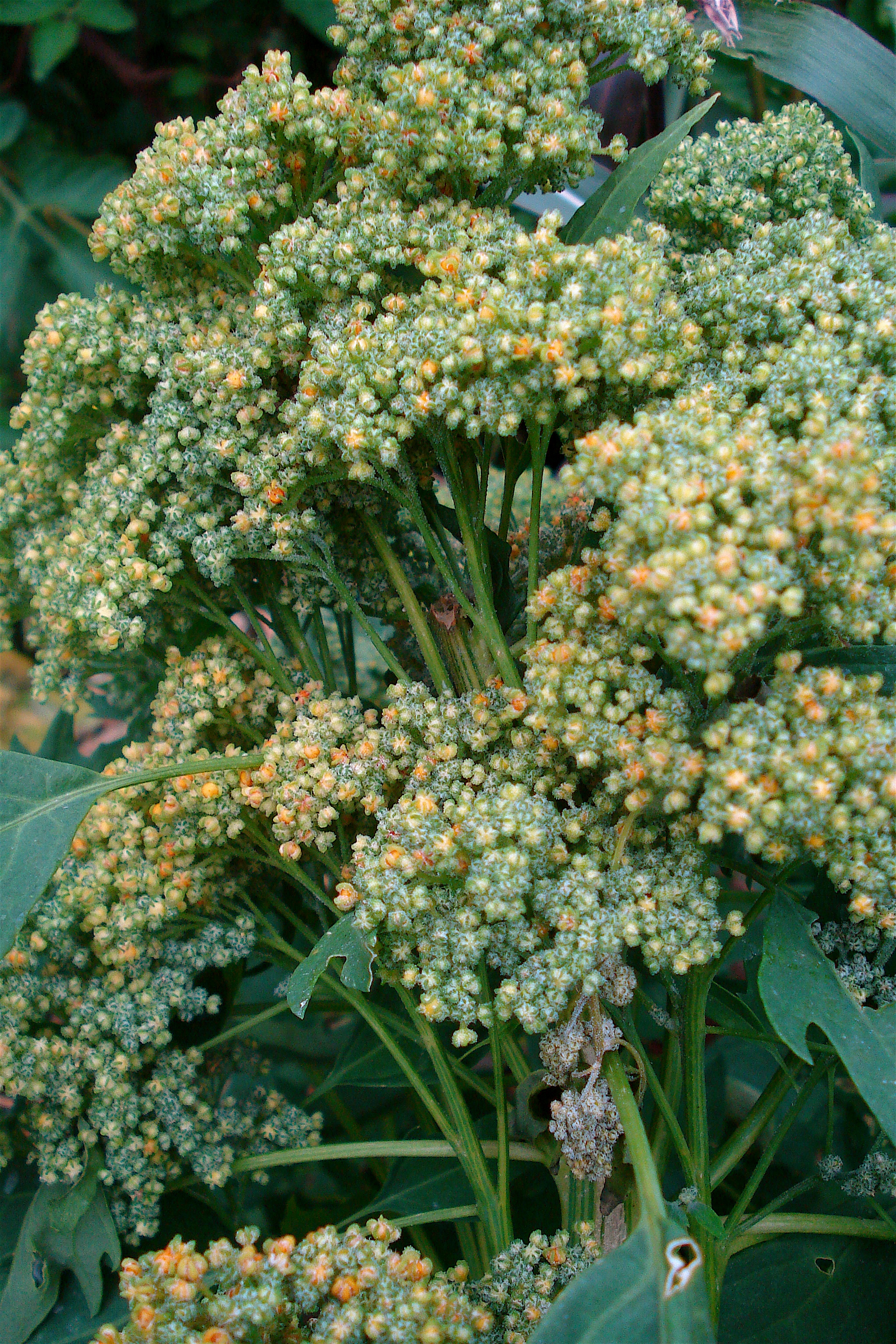I work in the bulk section of a grocery store (Central Market) and I think my favorite thing about working there is listening to people try to pronounce quinoa. My second favorite thing about working there is helping people who get overwhelmed by all of the different types of grains we have.
I thought it might be fun to have a series of posts about some of the different types of grains, and I wanted to get started with the powerhouse of them all- quinoa!
So first for the record quinoa is pronounced keen-wah. I hear it pronounced every which way and it makes me giggle at the different ways that people say it! So now that we’re done with that we can get right into the good stuff!
What is quinoa?
Quinoa is technically a seed, not a grain though we do tend to refer to it as a grain because it’s grain-like. It’s sometimes called a pseudocereal since it’s not technically part of the grass family like the other grains. Quinoa is related to beets, spinach, and tumbleweeds.

Quinoa has been around for 3-4000 years and it originated in the Andes of South America. The Incas referred to it as the ‘mother of all grains’
What’s so great about quinoa?
Quinoa is considered a nutritional powerhouse because it’s protein content is so high and because it is considered a complete protein (it contains all of the essential amino acids- other plant foods tend to be low in some of them. For example wheat and rice are a little low in lysine). Quinoa is also a great source of fiber, phosphorus, magnesium, and iron (one serving= ~20% DV of iron!!). Also 1/2 cup of uncooked quinoa is only about 155 calories, making it a BIG bang for your nutritional buck!
Do you suffer from migraines?
Because quinoa is so high in magnesium it is a great idea to add some to your diet if you suffer from migraines. Magnesium is a mineral, and it helps relax blood vessels and could help prevent migraines. Increased intake of magnesium has been shown to be related to a reduced frequency of headache episodes reported by migraine sufferers.
Since we’re talking about magnesium and relaxed blood vessels, quinoa is also great for your heart! It can help decrease hypertension and rates of heart disease!
Saponin
In it’s natural state, quinoa has a coating of something called saponin for protection. This makes it bitter so that nothing will want to eat it. Saponin is toxic and can be irritating to the respiratory and GI tract, so make sure to give your quinoa a good rinse before you cook it (I rinse it in a mesh sieve until all the soapy-ness of the saponin is rinsed off)
What do I do with quinoa?
You can do so much with quinoa! You can use it in place of the grain in pretty much any recipe. It cooks up just like rice. I usually make mine in my rice cooker with the same ratios as I would use with rice…one part quinoa to two parts water or vegetable broth(it tastes soooooo good when you make it with vegetable broth!!) If you cook it on the stove, do the same ratios, but let it simmer very low for about 15-20 minutes.
Quinoa Recipes
I thought I ‘d share a couple of my favorite quinoa recipes just to get you started. I posted them earlier today since I knew that this post would be long enough, so I’ll just link you to the recipes!
Well, that’s it for now! Hope you come to love quinoa as much as I do.
Happy snacking!







Your recipes look yummy!
Brian said what he liked about CM was that he will slice some meat up for customers and they will say they want it thinner. So, he will pretend to move the knobs on the slicer, cut the meat the same, and then ask, “How about this?” and the customer will say, “Yay, that’s better.” Ha.
Hahahaha! That’s awesome!!! People can be so silly sometimes!
Your recipes look yummy!
Brian said what he liked about CM was that he will slice some meat up for customers and they will say they want it thinner. So, he will pretend to move the knobs on the slicer, cut the meat the same, and then ask, “How about this?” and the customer will say, “Yay, that’s better.” Ha.
…not sure why that posted twice. Guess I got a little happy with the clicking.